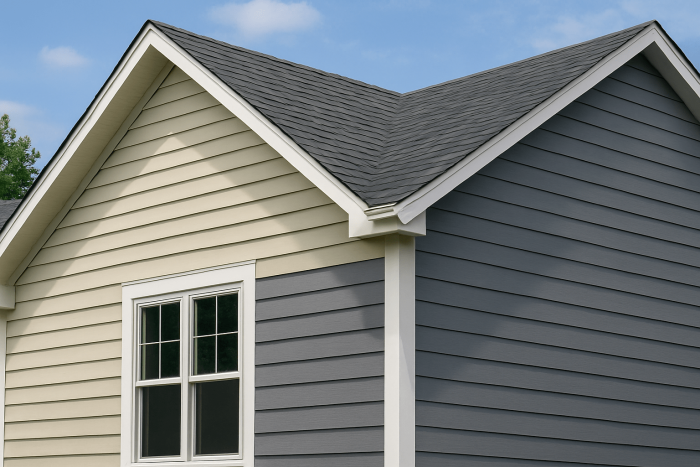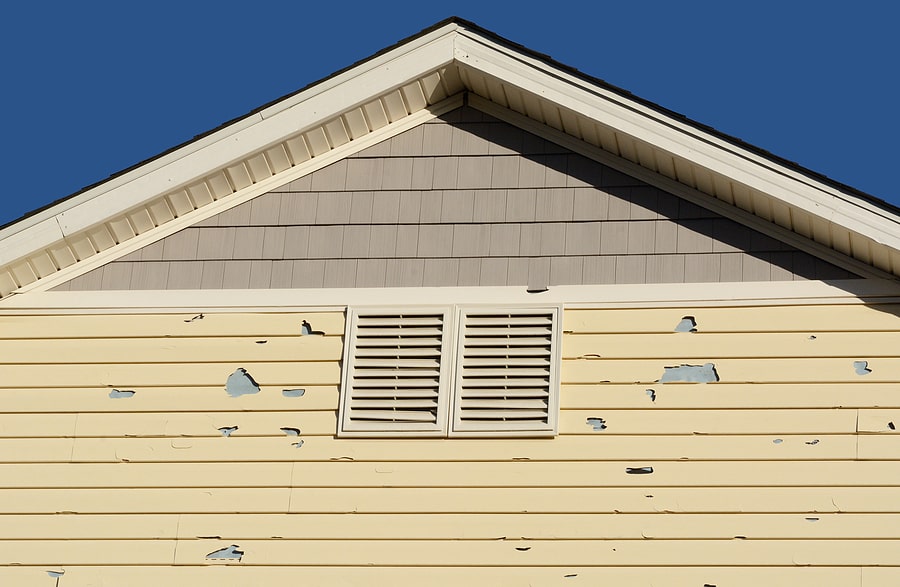
Vinyl vs. Fiber Cement Siding: Which One Lasts Longer?
If your home’s exterior needs an upgrade, you might go back and forth between vinyl vs. fiber cement siding. Which material will last longer and ultimately suit your needs? Discover the answer in this guide.
What Are Common Siding Materials Made Of?
Semi-rigid fiber cement siding, like James Hardie Board, comes from a mixture of cellulose fiber, Portland cement, sand, and water. Vinyl primarily uses PVC, which makes it more rigid. The durability and cost effectiveness of these materials make them some of the most popular options for residential exteriors.
How Vinyl and Fiber Cement Siding Compare in Terms of Cost, Maintenance, and Longevity

Several factors should influence your decision regarding vinyl vs. fiber cement siding. How much will your investment cost you up front and in the long run? Will you have to replace the materials multiple times throughout your lifespan?
Check out how these options stack up against each other:
- Cost: Both materials are around the same price range, though vinyl ends up being slightly more affordable initially. It typically costs between $3 and $12 per square foot, while fiber cement ranges from $5 to $14 per square foot.
- Maintenance requirements: You’ll also save money and effort maintaining PVC-based materials. It requires minimal maintenance, while its counterpart often needs scrubbing, caulking, or repainting.
- Lifespan: Many homeowners choose fiber cement because it lasts up to 50 years. Vinyl remains durable but often needs replacement after 30 years.
Exploring the Differences in Durability

In the debate between vinyl vs. fiber cement siding, you must consider how each material will protect your home. Both will eventually face natural wear and tear, but your climate may impact the rate of deterioration.
Vinyl isn’t weather-resistant and may incur the following damage:
- Broken planks after storms or high winds
- Color fading due to UV ray exposure
- Brittleness amid freezing temperatures
Choose fiber cement siding, however, and you’ll have a mold-, insect-, and fire-resistant exterior. This heavy-duty material works well in regions that experience drastic temperature fluctuations as well as fire zones. Remember that you’ll have to invest in regular maintenance to reap the full benefits.
How To Enhance Your Home’s Energy Efficiency With the Right Siding

Did you know that you can make your home more efficient based on your choice of siding? Keep more money in your pocket with durable siding that insulates your property. If you want to cut costs and make your home more sustainable, it’s in your best interest to research the efficiency of vinyl vs. fiber cement siding.
Low-maintenance vinyl doesn’t have the same insulating properties as its counterpart. However, installers can use insulated planks for long-term savings.
Fire and weatherproof fiber cement features an impressive R-value, meaning that it will effectively retain your home’s indoor temperature. This material keeps you cool in the summer and warm in the winter while reducing overall energy consumption.
Vinyl vs. Fiber Cement Siding: Which Should You Choose?
Finding your ideal material boils down to personal preferences. Consider the factors you value most, such as cost, maintenance requirements, and lifespan.
Do you prefer a low-maintenance material that lets you save up front? Do you want a siding that can last 20 to 40 years? You can’t go wrong with vinyl.
Is your top priority protecting your home from weather damage? Are you fine performing regular maintenance tasks to extend the lifespan of your siding? Fiber cement could be the perfect solution.
Revitalize Your Exterior With Elite Remodeling Services
End the vinyl vs. fiber cement siding debate with the help of Elite Remodeling Services. We’ll guide you toward the right solution for your home and budget, then install the material with precision. Call (952) 646-2480 for services in Farmington, Minneapolis, St. Paul, Apple Valley, Burnsville, Eagan, Lakeville, and all surrounding cities!
